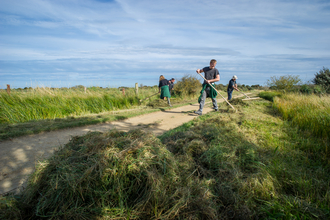©Philip Precey
Japanese knotweed
Introduced from Japan in the 19th century, Japanese knotweed is now an invasive non-native plant of many riverbanks, waste grounds and roadside verges, where it prevents native species from growing.
Scientific name
Fallopia japonicaWhen to see
January to DecemberSpecies information
Category
Statistics
Height: up to 2mConservation status
Invasive, non-native species.



